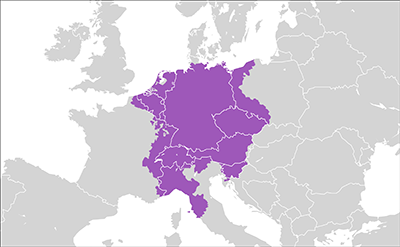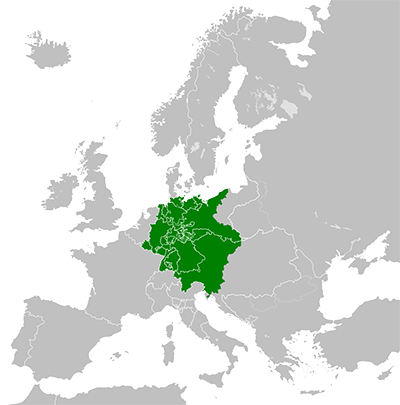The Unification of Germany
Part 1: Early Years
In 1871, what had been hundreds of disparate German states became one, with the advent of the German Empire. Prussia was the driving force behind the unification of Germany, but Prussian drive and determination were not all that was needed. The various German states that developed through the centuries were of different size and shape and unevenly distributed throughout the wide-ranging royal family trees that dominated Europe; however, many of these German states had things in common, such as language, religious tradition, and cultural outlook. For centuries, most of the German states paid homage in one form or another to the Holy Roman Empire, the sprawling political entity founded by Charlemagne in the 9th Century. At its height, the Empire dwarfed the geography of every other European power. The German states couldn't help squabbling and fighting among themselves for much of their existence. Some states were far more powerful than others. Notable among these were Bavaria, Prussia, and Saxony. Leaders of these states and others served as King of Germany and Holy Roman Empire down through the years. One of the largest German-speaking states was Austria, which dominated the scene for centuries, primarily through the powerful Habsburg dynasty. It was an Austrian monarch who was on the throne of the Holy Roman Empire for centuries and then when it breathed its last, dissolved as the result of military defeat at the hands of France's Napoleon Bonaparte in 1806. As the French Revolution had convulsed not only France but also the rest of the Europe, Austria, Prussia, and other German states chose sides in the various French Revolutionary Wars. Bonaparte's victory resulted in the reorganization of the German states into the Confederation of the Rhine, which lasted only a handful of years, replaced after Bonaparte's final defeat by the German Confederation. By that time, Prussia had emerged as the dominant German-speaking state. To help facilitate greater cooperation, Prussia introduced a customs union in 1818. More and more German states joined that economic arrangement, and a formal entity called the Zollverein emerged in 1834. The idea was to eliminate tariffs and other barriers to trade and commerce, with the hope of increasing common prosperity. As other European powers struggled through various economic problems of their own in the early 19th Century and, in some cases, strongly discouraged foreign imports, the German states found it more and more reasonable to embrace commonality rather than competition. Next page > Common Culture > Page 1, 2, 3 |
|
Social Studies for Kids
copyright 2002–2026
David White






